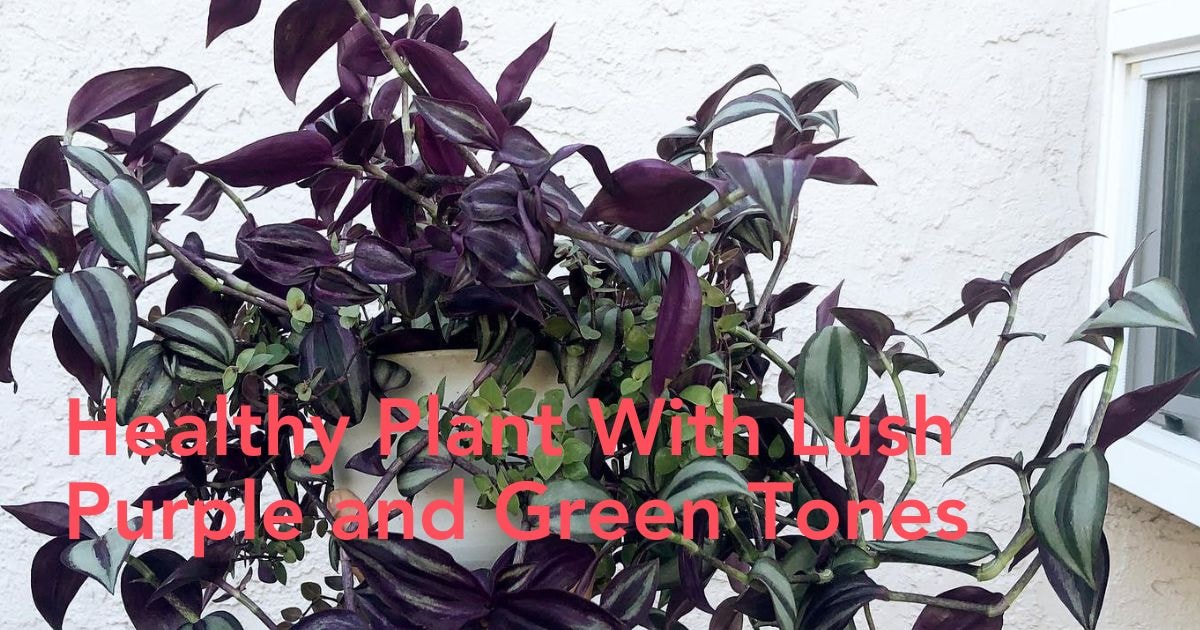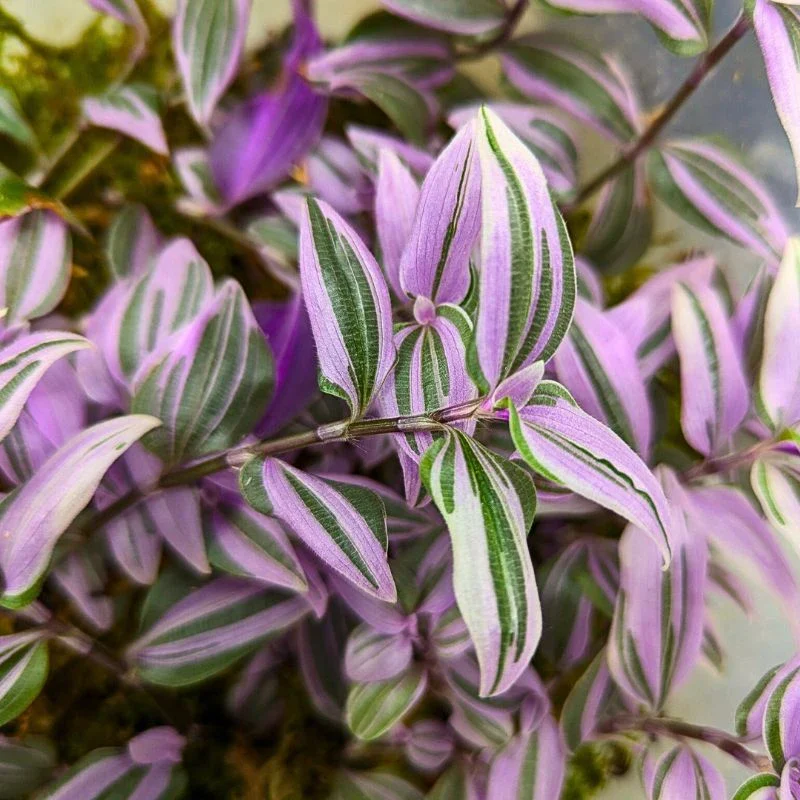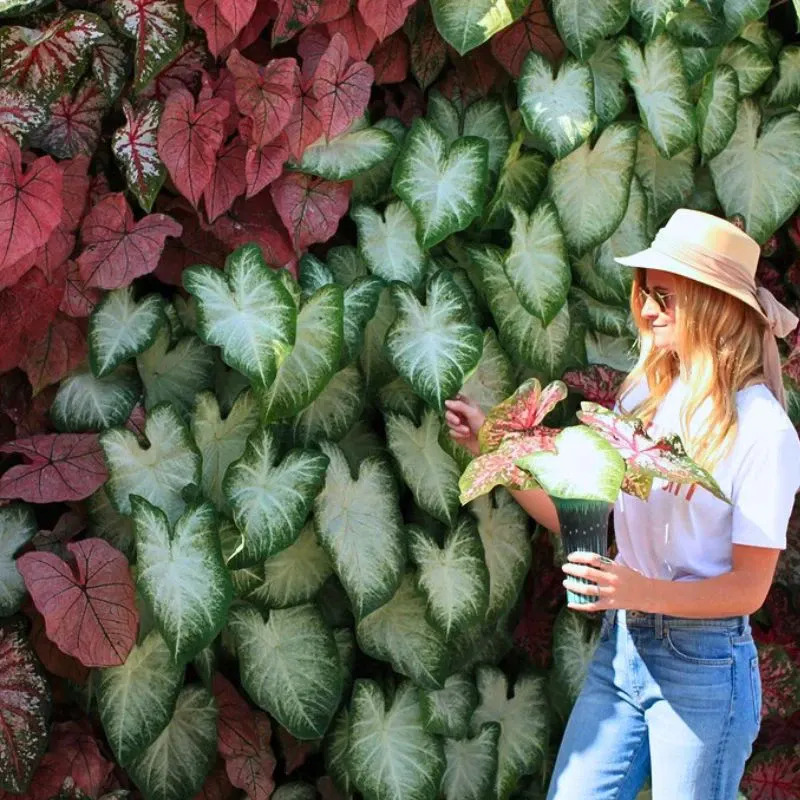Growing a wandering jew requires attention to light, soil, watering, and more. Whether you are new to caring for indoor greenery or are a seasoned enthusiast, this guide will help you manage the unique requirements of this well-loved selection from the spiderwort family. Below, you will also discover how it can be used in decorative indoor arrangements, why floral designers consider it a popular houseplant, and how to keep it looking lively for months. By focusing on essential maintenance steps, it is possible to maintain one healthy plant with lush purple and green tones while respecting the unique cultivation history behind this Commelinaceae plant type.
Meeting the Wandering Jew Plant
The plant often referred to as wandering jew belongs to the group commonly known as wandering jew, inch plant, or wandering dude. Its origin is traced to southern Mexico and other subtropical areas in Central America, though the plant has also spread into parts of South America. Officially, the scientific name for specific species is Tradescantia zebrina, sometimes identified under the synonym zebrina pendula. A notable feature is the pattern on the leaves, with stripes of metallic silver, deep purple, and green forming the distinctive look prized by collectors and interior designers alike.

Belonging to the same cluster as other tradescantia plants, these selections share similar growing preferences yet differ slightly in color or leaf shape. Because of its eye-catching style, many horticulturists regard it as a popular houseplant that looks impressive in hanging baskets or arranged around windows. A single specimen can be planted in a pot, providing coverage through its trailing and succulent stems. The name wandering jew has been used for decades, but some individuals also prefer alternative monikers such as Inch Plant or wandering dude.
When planted indoors, the remarkable purpose underside of the foliage and the patterned top offer colorful foliage that can spark a unique visual effect in your home. This creeping species is also classified as a native plant selection in parts of Mexico and is known to form a ground cover in the wild. Another characteristic is the ability to develop quickly during warming seasons, satisfying those who want to see immediate results from a single cutting. Whether set on a windowsill or arranged in a hanging basket, there's a lot to appreciate about these plants.

Popular Varieties of the Wandering Jew Plant
- Tradescantia zebrina: Enthusiasts regard this type as iconic due to the lovely silver, green, and purple stripes on the foliage. Another common name for it is the zebra plant, although that label can also apply to unrelated species. Some refer to it as zebrina pendula or zebrina tradescantia, both reflecting its lineage. Since its leaves often feature a metallic sheen, many individuals also call it the silver-inch plant for reflective highlights.
- Tradescantia fluminensis: Known by many common names, T. fluminensis has smaller, oval foliage that is typically more green than purple. While sometimes overshadowed by its flashier counterparts, it remains a favorite among indoor gardeners for quick growth. It tolerates a range of lighting conditions, though it prefers bright indirect rays.
- Tradescantia pallida (Purple Heart): Colloquially referred to as purple heart, this variety has elongated, intense purple leaves. Its stems can become long, making it a compelling choice for a hanging basket or large container. The deep shade of purple stands out in any collection of indoor plants, though bright indirect rays will help maintain color depth.
Using Wandering Jew for Indoor Decor and Floral Arrangements
Floral designers frequently highlight the purple and silver tones of wandering jew in modern interiors. Because these plants feature trailing or cascading stems, they add dimension when suspended in a hanging basket. Other decorators place them among larger houseplants, such as elephant ears or tropical palms, to provide contrast. The bold purple leaves stand out beside broad, deep-green leaves, bringing a multi-toned setup to living rooms and offices.
In professional floral design, individual cuttings might be woven into displays, adding an ornamental highlight among the blossoms. Although it is rarely the main focal point, this selection offers a pleasant complement to blooms and stands up well alongside classic favorites like the broad-leaf ferns. Thanks to the easy care regimen, these plants adapt to various design ideas, whether used in event decor or everyday interior styling. Some enthusiasts also like to pair them with cacti or succulents for an unconventional textural mix. Keep them in bright, indirect areas, watch for dryness, and they can complement many color palettes.

Landscaping Potential for Wandering Jew
In certain mild climates and compatible USDA hardiness zones, a wandering jew may be grown outdoors year-round. In such setups, the plant can spread as a low-lying creeper, delivering swaths of purple amid other greenery. If you reside in a region that remains moderately warm, it might function as a pleasing addition to garden beds or container arrangements. Some gardeners even treat it as a quick-fill accent in partial or dappled shade. Provided it doesn't receive scorching midday sun, it can flourish in warmer zones, especially if placed near shrubs or used alongside other ground-level native plants.

However, caution is advisable in areas where the plant could escape cultivation and spread beyond intended boundaries. Because wandering jew belongs to a vigorous group, it sometimes competes too aggressively with local flora. Make sure to confirm local guidelines if you plan to introduce it as a ground cover. If your region experiences cooler winter, consider bringing any outdoor pots inside or treat the selection as an annual.
Ideal Growing Conditions for the Wandering Jew
For a flourishing display, consider the environment that best suits this plant. In many cases, these species thrive when they receive bright indirect sun exposure. Cultivators sometimes raise them as outdoor selections in suitable USDA hardiness zones, where they can be grown outdoors as a perennial. Others treat them as annual plants in colder climates that dip below 16°C (60°F). Proper adjustments in temperature, humidity, and light can make a significant difference in how well the plant grows.

Light Requirements for a Wandering Jew Plant
Light is essential for developing the signature stripes on tradescantia zebrina leaves. Ideally, aim for bright indirect luminosity to protect the foliage from scorching. Interiors that receive filtered rays or a small amount of partial shade can support healthy color development. If grown in an outdoor setting, remember that intense sunlight may fade or damage the leaf patterns, so consider a slightly shaded patio if you want to keep these plants grown outside. Short bursts of full sun can be tolerated, but direct midday rays often trigger browning on the lower leaf surface.
Since wandering jew can handle a range of lighting conditions, some growers position it near windows that get a few hours of strong light and the rest of the day in softer illumination. Keep an eye out for leggy growth or a duller appearance, which can indicate that the plant is not receiving enough rays. Ensuring a balance of brightness and moderate shade can prevent leaf drop and maintain strong development.

Temperature and Humidity That a Wandering Jew Demands
To promote vigorous foliage, place these plants where temperatures hover between 16-24°C (60-80°F). Extremely cold conditions can cause significant damage to the leaves, while high heat can lead to wilting or leaf discoloration. If you wish to place them outdoors in mild conditions, confirm that your region's USDA hardiness zones match the temperature range suitable for the species.
Humidity levels around 70% seem ideal for this creeping plant. Those living in drier areas might consider a humidifier or daily misting to maintain enough moisture in the air. This step can also help reduce leaf damage. While some folks get by with standard indoor moisture levels, an extra humidity boost often preserves bright hues of purple and green across the leaves.

Watering and Soil Essentials
Effective watering and the right soil arrangement are critical for any who want to sustain healthy leaves and robust roots. Overdoing it can lead to root rot, a harmful condition that can kill the plant if left unchecked. On the other hand, failing to supply moisture causes the leaf tips to brown, eventually leading to unwanted shedding. Maintaining a proper balance ensures that your wandering jew remains content year-round.

- Water Schedule: Check the top inch of the soil regularly; if it feels dry, it's time to water. Weekly watering is often sufficient, but the exact frequency depends on local humidity, temperature, and the pot's material. Terra-cotta containers, for instance, dry out faster than plastic.
- Drainage: Ensure that your pot has drainage holes. Stagnant moisture can suffocate the roots and trigger disease.
- Adjusting in Cooler Months: Many people reduce watering slightly when temperatures drop to reflect slower growth. This measure helps keep the plant from sitting in water it doesn't use, limiting the risk of overwatering.
- Fertilization: Consider a water-soluble fertilizer or another balanced formula every four to six weeks during the active growing season. Using a half-strength solution prevents leaf burn. Avoid feeding during cold months, when the plant naturally enters a rest period.
Soil Selection and Repotting Needs for the Wandering Jew Plant
The choice of soil is pivotal, as these plants appreciate a blend that drains freely. A suitable mix might incorporate standard indoor potting medium, peat moss, and perlite. This setup keeps moisture at safe levels while averting waterlogged conditions that might harm the roots. If you're combining your own recipe, aim for a light, air consistency that still holds a bit of moisture.

Repotting every two or three years is wise, especially if roots begin to circle the inside of the pot or poke through drainage holes. When you move a specimen to a larger container, opt for one size up rather than jumping too many dimensions, as an oversized pot encourages soggy soil. Gently loosen the roots during the transfer and plant in a fresh medium. Many people also prune excessively long stems at a repotting time to encourage branching and compacting the arrangement.
Pruning and Propagation Techniques for Managing Wandering Jew Plant
Basic pruning is an excellent way to shape and maintain your wandering jew. Periodically removing older leaves or snipping back overgrown stems will keep it neat and prevent tangling. Trimming the tips prompts fresh shoot growth and preserves the purple shading on the undersides of newer leaves.
Pruning also helps extend the lifespan of the same specimen. As the stems lengthen, the lower leaves might drop off over time, leaving bare patches. A quick snip above a leaf node can facilitate new branches, making the arrangement look fuller.

Propagation Steps to Use for Propagating the Wandering Jew
One of the most satisfying aspects of the wandering jew plant is how easily it propagates. Many enthusiasts generate new plants for themselves or friends. Whether you're targeting a fuller pot or distributing them in multiple containers, the process is usually straightforward:
- Select a Stem: Looking for a healthy vine with several leaves. Cut below a leaf node using sterile shears. This cut ensures you have enough space for rooting.
- Stem Cuttings: While some prefer placing their plant cuttings in water first, you can also plant them directly into a pot containing the right soil. Either option can work effectively if managed well.
- Moisture Maintenance: Keep the medium slightly damp when first planted, avoiding oversaturation. Over the next few months, watch for root-and-shoot development. Once the roots have been established, shift to a more standard watering schedule.
Common Issues and Solutions - Pest Management and Disease Prevention
Although wandering jew species are typically resilient, the leaves may invite occasional pests such as aphids, spider mites, or mealybugs. Quick responses, including insecticidal soap or neem oil, help control the spread. Isolate an infested pot from other plants to prevent a larger outbreak.

Fungal diseases, often tied to overwatering, show up as spots on the leaves or rotted roots. Careful monitoring of moisture, plus ensuring good airflow around the pot, reduces the likelihood of disease. If you suspect a fungal issue, look for specialized fungicides. Moving the pot to a drier spot can also help.
Is Wandering Jew a Pet-Safe Plant?
While many owners keep wandering Jew species indoors without problems, the sap in these plants can irritate pets if they chew on the stems or leaves. Cats and dogs that consume parts of Jew plants may show mouth soreness or stomach irritation. If you have animals that tend to nibble, it's best to position your wandering jew plant out of reach. Wearing gloves when trimming or propagating reduces the chance of skin discomfort, mainly if you have known sensitivities. Some folks place these plants in hanging baskets or on tall shelves to ensure safety.

Caring for the Wandering Jew Plant
Learning the requirements of these jew plants unlocks a world of decorative options. The graceful flow of the stems and the combination of silver, green, and purple can enliven any living space. Whether you position your collection in hanging baskets, on windowsills, or outdoors in acceptable hardiness zones, success depends on proper lighting, moderate watering, and balanced fertilization during the growing season. By preventing overwatering and giving your selection plenty of bright indirect rays, you can maintain an engaging look for a long time. Employ basic pruning techniques, watch for pests, and your wandering jew plant will reward you with ongoing appeal.






